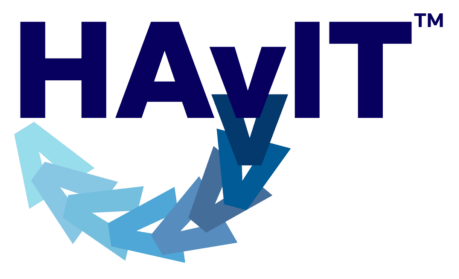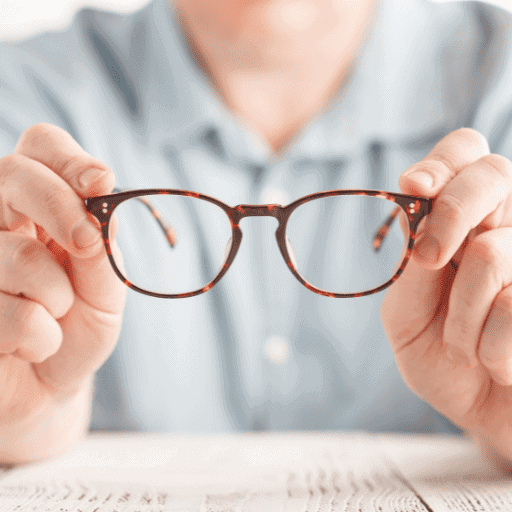There is hope with vision therapy when glasses fail to help you have clear, single vision while reading, moving, or riding in a car. Both times I needed vision therapy, I experienced improvements just weeks after starting vision therapy. My whole body felt more relaxed as I moved, read, and worked around the house. I gained hope.
The cost of avoiding vision therapy is much higher than the financial cost of the therapy itself. When you lose your independence, there is an emotional cost. Can you imagine struggling to read, walk, and complete everyday tasks? You are isolated because you are unable to drive. When you lose depth perception, stepping up over anything is a challenge. Walking down stairs is just plain scary. Knowing the distance between yourself and others or even a stationary object takes focused concentration. Walking fails to relax you. Riding in a car creates feelings of panic. Everything can look too close. Your eyes are unable to keep up with the speed of the moving car.
Vision Therapy Strengthens Eye Muscles
After I lost partial eyesight in one eye, the neuro-rehabilitation optometrist’s comment filled me with hope. He shared that I was very lucky to already have completed vision therapy. My brain remembered how to move my eye muscles helping me cope. Despite the damage to my right eye, my eye muscles in both eyes were strong enough to clear my vision. I remember the amazement in his voice.
Once your brain learns a skill, it is not lost.
Cheri Moore
So, why did I need vision therapy again? My vision loss presented new challenges. I lost my fixed depth perception at near and far. My brain needed to learn how to use just one eye when I looked in one direction. But when I looked in other directions, I could use both eyes together. The damage in my one eye only took away my upper left vision field.
This was a new challenge taking away my independence, leaving me feeling nauseous, and unable to read. Therapeutic glasses with prisms, vision therapy, and hard work helped me regain my independence and ability to read. Today, I no longer need eye glasses with prisms.
Motivation to Seek Vision Therapy
The first time I started vision therapy, I needed motivation. This was before my vision loss. Looking back I am a bit surprised by my reluctance because I screen for visual processing difficulties with all my clients. But first, I tried new glasses. All my college reading assignments left my eyes hurting and red. Oh no! Did I have visual processing deficits? Learning to read was very difficult for me until age eight.
When new glasses failed to keep my vision clear and single with reading, I accepted it was time to make a plan to see an optometrist specializing in vision therapy. I still remember my shock hearing the optometrist share that my right eye floated up, Amblyopia. Wow, that is why I titled my head leaving me with tension in my neck and shoulders!
Brain’s Response, Visual Suppression
Do you know that visual suppression occurs in your eighth year of life creating single vision with reading? It is almost like the brain has accepted your visual processing difficulties. That is why I was finally able to read and learn more easily towards the beginning of third grade. However, I struggled to enunciate words and remember story details. Yes, I was a whole word speller.
At age 49, vision therapy exercises taught my brain how to keep my eyes in alignment, working together. Once a brain learns a skill, it remembers.
Cheri Moore
Motivation to Seek Help with Vision Therapy
What motivated me to seek vision therapy the first time before I lost my vision? Seeing a dear friend lose her ability to drive, read, and independently live on her own. I wondered why she was losing her eyesight. To this day I remember the shock of hearing her story. JoAnn’s story greatly encouraged me to seek answers when my own vision started to blur while reading despite wearing new glasses.
JoAnn’s Story
One day, I asked JoAnn a question not asked by any of her eye doctors. “While growing up, did your vision blur and sometimes appear to double?” With a shocked look on her face, she replied, “All the time!” When she became a young adult, she tried different pairs of eyeglasses. Yes, the images were now crisp and visible. But after a few months, her eyeglasses failed to keep her vision clear. In fact, her glasses almost seemed to accentuate her blurry vision. She gave up and stopped wearing them. Later in life, JoAnn’s eye doctors told her that she wore out her eye muscles. What did they mean?
Consequences of Not Wearing Glasses
Can untreated visual processing difficulties overwork eye muscles resulting in age-related vision loss? I researched the issue. Yes, you can harm your eyes by failing to wear glasses. According to John Staughton, author of Science ABC,
“Eyestrain will lead to headaches, an inability to focus, double vision, and other symptoms, which makes it even more difficult to see, and weakens the muscles in the eye.”

We use our eyes every moment we are awake. When the brain needs vision therapy to teach the eyes to work together, glasses only help for a short period of time.
Vision Therapy Is Effective At Any Age
With help from an optometrist specializing in vision therapy, JoAnn could teach her eyes to work together. However, she thought she was too old. Oh, how I wish I could have persuaded her to try vision therapy. There is a national search engine to find a provider near your home.
Today, we know that all ages benefit from an individualized eye exercise program called vision therapy. Researchers found that vision therapy is effective for adults who are motivated to complete the hard work required to strengthen eye muscles.
Have you ever thought about the need to retrain the brain’s use of working with both eyes? You may need prism eyeglasses, patching, and/or eye surgery. However, all of these interventions fail to teach both eyes to move and work together.
Prism eyeglasses are very therapeutic because the eye-brain visual pathways receive stimulation. They provide a window of opportunity to help you respond to vision therapy.
Cheri Moore
Vision Therapy, an Effective Treatment for Lazy Eye, Amblyopia
According to research studies, vision therapy is an effective treatment for lazy eye, amblyopia, and other conditions that contribute to visual processing difficulties. Vision therapy teaches the brain how to use both eye to keep vision clear and single.
Since JoAnn’s difficulties were lifelong, she most likely had an undiagnosed weak eye.
Now I understood why so many of my new clients, prior to working with me, stopped wearing their new glasses after just a few months. Their glasses failed to help, because their brain needed to learn how to use both eyes together for the glasses to be beneficial! None of my clients even knew vision therapy existed nor that their eyes failed to work together. Just like JoAnn, they assumed blurry vision was untreatable.
Clues Provide Hope
If any of the stories I shared remind you of yourself, I encourage you to complete a Moore Auditory-Visual Questionnaire (MAvQ) and email your MAvQ Report. Communicating the intensity and frequency of auditory and visual processing difficulties help us advocate for testing not typically completed during routine vision and hearing exams.
How dry are your eyes after reading?
Are your eyes so tired after reading that you rub them, feel physically tired?
Do you find yourself bumping into stationary objects like tables, counters, or door frames?
While you read, do letters can float off a page? Do stationary objects like a picture on the wall appear to move?
Cheri Moore
Did you know that people blink less often when compared to those without visual processing difficulties? This helps their vision stay single and clear. Also, their eye muscles must work harder than normal to keep their vision clear and single. If you answered, yes, to any of the above questions, schedule a phone call.
To this day I remain astonished by the physical fatigue felt to my core caused trying to read with damage in one eye.
Visual processing difficulties caused me to feel off-balance while looking at others during conversation. I missed body language and parts of the conversation.
What could I do? I chose to keep moving, creating, and meeting the needs of others. I could listen and cook. If I needed to type on my computer, I simply closed my eyes and relied on my muscle memory. In fact, it was during this time that I began to write blogs. With my daughter’s help and encouragement, we created a website to help parents and professionals benefit from my experiences and work with clients as an educational therapist. In a strange way, my vision loss journey is turning into a blessing.
If my journey has taught me anything, it is that there is not a one-size-fits-all solution. That is why I work one-on-one with every client.







0 Comments